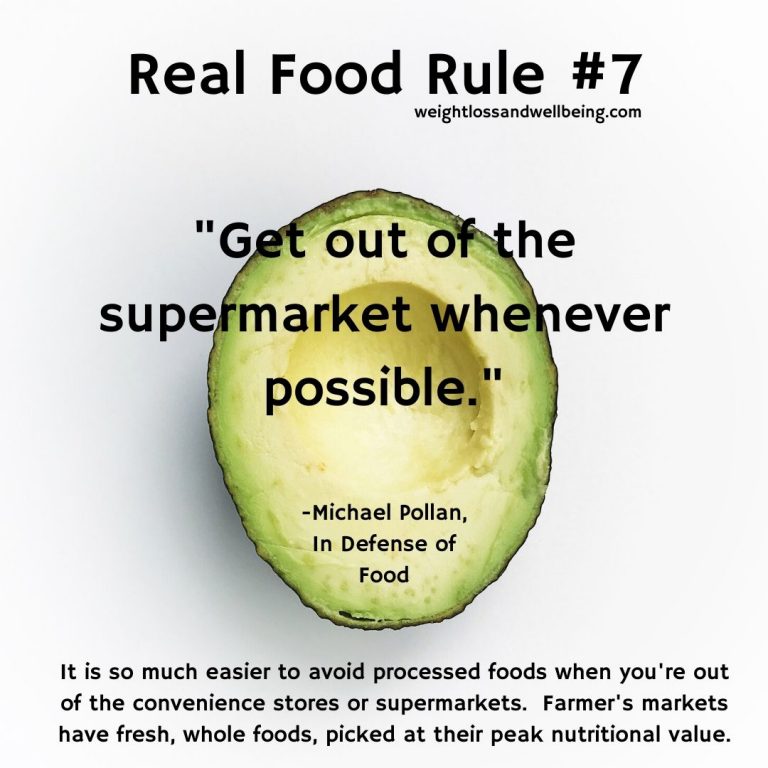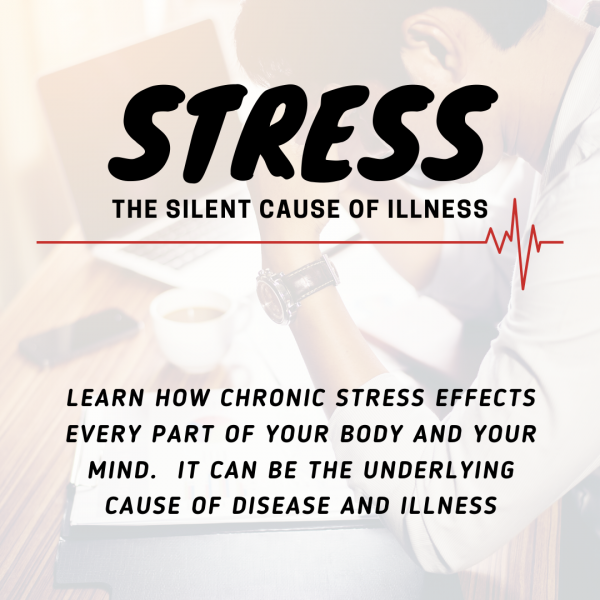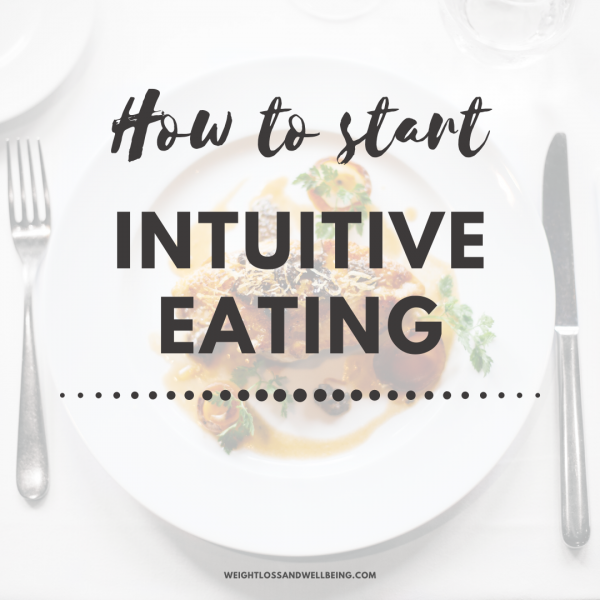These real food rules are compiled from Michael Pollan’s book, In Defense of Food: An Eater’s Manifesto. Cutting processed foods and relying on real, whole foods can be difficult in our modern food landscape.
Please note, this post contains Amazon Affiliate links that generate revenue for the site, at no additional cost to you, should you utilize one of the links.
Real food means minimally processed foods as close to their natural state as possible. If you’re new to this idea start here with Real Food Defined. And make sure you start with Rules #1-5, if you haven’t already. Michael Pollan creates a simple set of guidelines to navigate this foreign food environment, full of highly processed foods and food products.
So here are 5 more straightforward, and pragmatic rules to ensure you are eating as much real food as possible. No one is perfect, and nowadays its nearly impossible to completely avoid high fructose corn syrup, and highly processed foods. But there are a couple shopping strategies you can employ to keep the notorious offenders out of your pantry.

Real Food Rule #6
I didn’t start doing this intentionally. But after cleaning up my diet, I realized one day that I almost exclusively shopped the edges of the supermarket.
Try to start in the produce section and plan your meals around whatever is fresh and in season. Then you can move to the deli counter. I like to grab at least two different types of meat (like chicken thighs and pork shoulder).
After that I hit the dairy case for some yogurt, cheese, and eggs (lots of eggs). At this point, I have most of what I need. Unless I need to restock any of my whole grains (like rice and quinoa) or canned goods (like tomato sauce or beans).
Once I stopped buying all the processed foods, I found I barely went into the center aisles. And trust me, it is so much easier to keep those junk foods out of your cart when you don’t have to walk by them.
Real Food Rule #7
It may be hard, but it is so worth it. Farmer’s Markets are the mecca of Real Food. No one at the farmer’s market is using High Fructose Corn Syrup or soy lecithin. Even the baked goods are better and closer to their natural state than the bread you find in the supermarket. The lack of preservatives alone make a huge difference.
The best part about the Farmer’s Markets are the seasonal produce options. You can be sure that what you are choosing is absolutely in season. I live on the West Coast and benefit from a warm climate all year round. But I love finding new produce that thrive during the cooler months. Things like lettuce, tubers, and persimmons all grow during the winter.
As you change your produce throughout the year you rotate through the full spectrum of vitamins and nutrients. Not to mention the frequent variety on your plate will add to your satisfaction and satiation.


Real Food Rule #8
As we discussed with the Farmer’s Markets, eating foods in season is absolutely imperative to avoiding processed foods. Seasonal produce ensures you are getting the full spectrum of micro-nutrients as the seasons change.
Many people underestimate the environmental toll of modern agriculture. Most of the processed food products purchased in supermarkets are made of chemically treated corn, that has to be driven to a factory. And those large factories have a heavy burn on the environment. Once it is ready it has to be driven again to your supermarket. It all adds up.
Growing and eating locally can prevent significant impact on our planet. It also cuts down on plastic and un-recycleable waste. And supports a more sustainable lifestyle and stronger community.
Real Food Rule #9
Sustainability is becoming a more popular consideration when discussing diet and health. As we learn more about living in harmony with our environment, we realize the importance of returning to basic agriculture and animal-husbandry techniques.
Taking a step (or a few steps) out of the industrial food chain is the easiest way to ensure you are getting real food. And food that has had the smallest carbon footprint possible.
Whether you find a local baker for your bread or a local butcher for your meat, you can take back your choice and your voice. And supporting local farmers and grocers you can build up the ecosystem in your community to create more opportunities for local food.
Make sure to shop local and small as often as possible. Co-Ops and Farmer’s Markets are a great place to start.


Real Food Rule #10
I love this rule because it is so powerful. When was the last time you knew the person who grew the food or raised the animals that you ate. At least for me, it is a very rare occasion. Besides the occasional bag of tomatoes or lemons from a neighbor, I do not get the opportunity to know who is feeding me.
Learning who has grown and raised your food is important. Understanding their methods and techniques creates a connection between you and your food. A relationship that most people actively avoid with today’s food landscape.
Facing the burden and sacrifice that comes with harvesting produce and butchering meat is important for maintaining our humanity. Create relationships with those who provide your food and meats.











